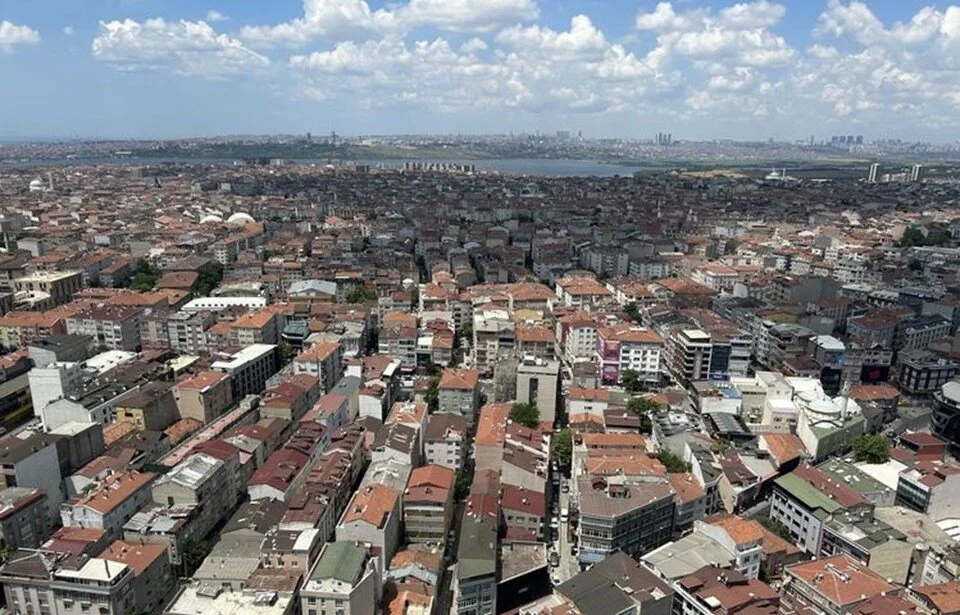“70-80 thousand buildings are expected to collapse in Istanbul” in Marmara earthquake

“70-80 thousand buildings are expected to collapse in Istanbul” in Marmara earthquake
It has been one year since the devastating earthquake centered in Kahramanmaraş, which devastated 11 cities in Turkey. Turkey, which is still recovering from the earthquake, is also waiting for the big earthquake in Marmara. Pointing out that the earthquake recurrence interval for Marmara has expired, Geological Engineer Prof. Dr. Okan Tüysüz said that it is not possible to determine the time of the earthquake and that the probability of a major earthquake is high. Tüysüz warned that 70 to 80 thousand buildings in Istanbul alone would collapse or be heavily damaged in a possible Marmara earthquake.
One year has passed since the earthquake disaster centered in Kahramanmaraş. More than 53,000 lives were lost in the earthquake that devastated 11 cities across the country.
While Turkey is trying to recover from the earthquake, it is also waiting for a possible earthquake in Marmara.
Geological Engineer Prof. Dr. Okan Tüysüz wrote an article for Anadolu Agency about the earthquake danger awaiting the Marmara Region.
Pointing out that Turkey is located on one of the world’s most active earthquake belts due to its geographical location and geological structure, Tüysüz said, “The North Anatolian Fault, which is one of the most important earthquake sources of the country, is approximately 1600 kilometers long, starting from Bingöl Karlıova and extending westward in the direction of Erzincan-Niksar-Tosya-Bolu. The northern branch of the fault, which divides into branches westward from Bolu, passes through Düzce and Sakarya, enters the sea from the Gulf of Izmit, passes off the Islands, passes through the Kumburgaz-Silivri-Tekirdağ offshore, comes back to land at Mürefte and extends from the Saros Gulf to the North Aegean and Greece. According to measurements, the 15-20 mm/year movement speed of the fault in this branch is much higher than the others, and therefore earthquakes are more frequent in this branch, which is called the “Main Branch”. The southern branch, which passes through Bolu-Geyve-Iznik Lake, enters the waters of Marmara from Gemlik Bay and runs parallel to the coast. It comes ashore in Erdek and extends towards the Edremit Gulf. This branch also produces large earthquakes, but at larger time intervals.” He used these expressions.
DEADLINE FOR THE MARMARA
Explaining the general rule in earthquake science with the words, “If there has been a big earthquake in a place in the past, there will be similar earthquakes there again after a certain period of time,” Tüysüz said that the earthquake recurrence interval for Marmara has expired. “Although it is not possible to determine the time, the probability of a big earthquake is high,” Tüysüz said.

THE COASTLINE WILL SUFFER THE GREATEST DAMAGE
Prof. Dr. Tüysüz said that the scenarios put forward in the event of the expected big earthquake are “not encouraging” and explained that the settlements on the shores of the Marmara Sea will suffer the greatest damage.
Explaining that the golden rule in the fight against earthquakes is not to increase the population and industry in the places where the earthquake is expected to be the most severe and to keep them away from the areas where the danger is high, Tüysüz stated that this rule is ignored in Istanbul.
Prof. Dr. Tüysüz explained that the earthquake disaster centered in Kahramanmaras revealed at a heavy cost how unresilient the cities and structures in Turkey are to earthquakes. Tüysüz said, “Unplanned urbanization, which has been accelerating since the 1950s due to the increase in our population and the acceleration of migration from rural to urban areas, and the construction workmanship and supervision, which could not be raised to the level of developed countries, have enabled the problem of earthquake-resistant cities to gradually grow like a snowball, while dozens of zoning amnesties, which were enacted largely with political expectations, have been a factor that has encouraged disaster-resistant structures rather than preventing them.”
“70-80 THOUSAND BUILDINGS IN ISTANBUL WILL COLLAPSE OR BE SEVERELY DAMAGED”
Explaining that the big earthquake expected in Marmara will cause damage to 700 thousand buildings in Istanbul, and 70-80 thousand of them will either collapse or be heavily damaged, Tüysüz continued as follows:
“A major earthquake in Marmara will affect not only Istanbul but almost all settlements in the Marmara Region. The possible effects of such an earthquake have been put forward by different researchers. In the map below, prepared by Okan Tüysüz and Korhan Erturaç, the black line in the center shows the fault that is expected to rupture. In the worst case scenario, this fault is expected to produce an earthquake around 7.5. The areas shown in black (intensity 10) and red (intensity 9) on the map show the places that are expected to experience the greatest shaking and therefore the greatest damage in an earthquake. Orange color indicates one degree weaker intensity. It can be predicted that the most intense shaking in a possible earthquake will be experienced in the areas shown with these two colors. Yellow, blue and green areas show a gradually decreasing intensity distribution. In these areas, moderate to weak damage can be expected in very poorly constructed buildings. The right side of the map shows which color corresponds to which intensity (not magnitude).”






